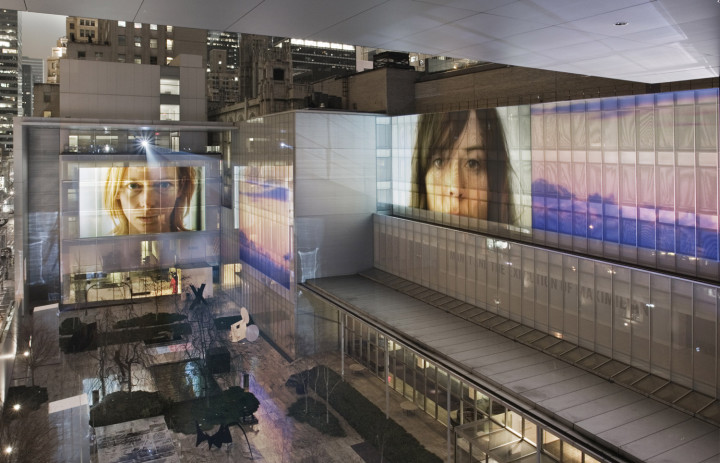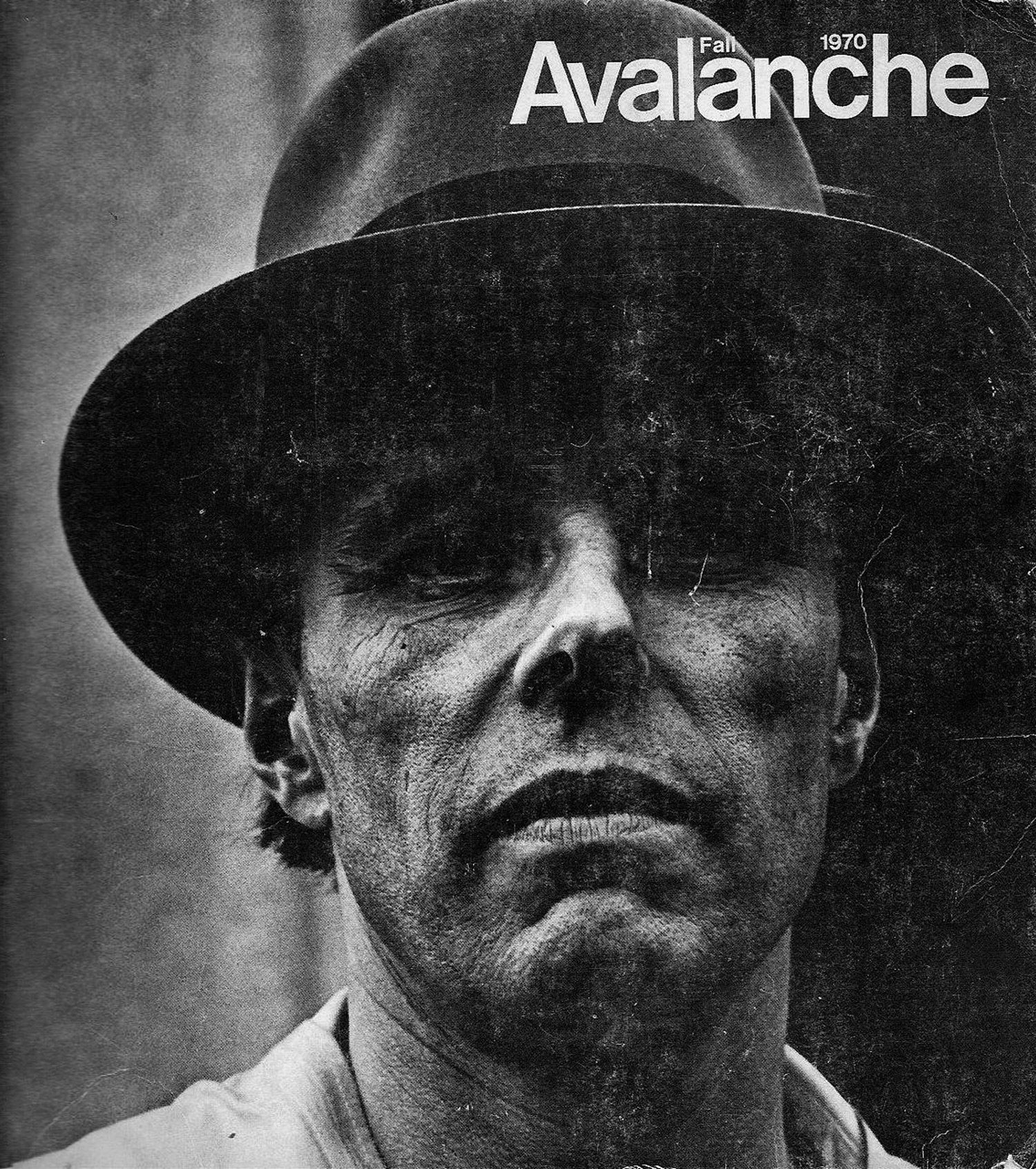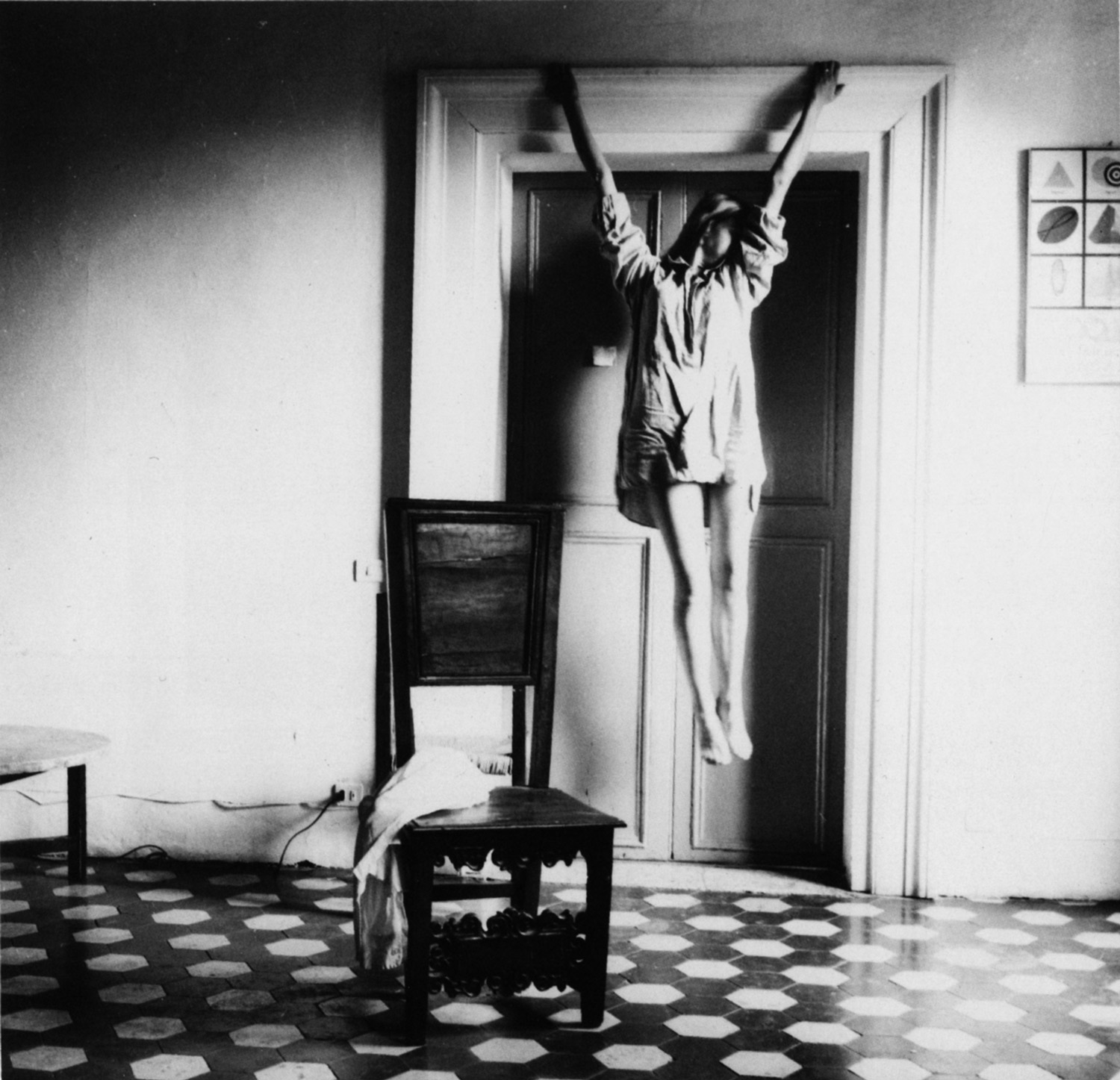
Sleepwalkers feels like a New York night. And it is. Shot in all five boroughs, using the city as its backdrop, five characters move through New York’s streets, subways, public buildings and private bedrooms. They encounter the various holes that all New Yorkers crawl into and out of everyday. Projected onto the slick, new Museum of Modern Art façade at dusk and lasting until late in the evening, Doug Aitken replicates how we all dreamily idealize the City. Five narratives, each thirteen minutes long, are projected on eight exterior locations. The best views are to be found in MoMA’s sculpture garden. The garden is a fitting locale for it, since it draws together the high modernist sculpture and the canon of painting contained on the other side of the wall by turning the building into a cinema of pixelated fragments. Just when the action in the projection feels too real, it retreats into flashing colors and geometric grids.
Though seen at night, the five characters are not MoMA’s phantoms. They are, like most New Yorkers, aware of the City’s energetic duality. Aitken — a native of Los Angeles — worked in partnership with Creative Time and MoMA to create a public work that reflects the City as it operates, a place where public and private continuously intersect and resist each other as if on a filmic loop. In Aitken’s imagery, the projected characters are defined roles. There is a businessman, an office worker, a postal employee, a bicycle messenger and an electrician. They are all functionaries in the system of the city. But Aitken also shows that one’s function does not compress one’s desire in New York. Desire is still an unbound thing that the City cultivates. That one, or more, like Donald Sutherland, is recognizable outside the Sleepwalkers role is inconsequential and to be expected. Each day, New Yorkers abut the powerful and the disempowered with equal amounts of revulsion and empathy.
It is almost unnoticeable that Sleepwalkers has no sound. The narratives are conveyed through understood actions; we all know the sound of a yellow cab screeching to a halt or a bike whistling through traffic. Yet, it is impossible to see Sleepwalkers without hearing the city.
What Aitken captures is not just the wispy feel that we all get when we fly over New York or when you see its skyline in your sleep. There is something more; it’s the way in which projecting on the façade of a building, as he has done, feels like something that we, New Yorkers, all do, at least a little bit. There is a building for each of us in New York. It might be one that we want to live in, one that we used to work in, or one that something really special happened in. Night becomes the place to see that building in the City as we feel it, the way we feel ourselves inside of it, or the way that we literally project ourselves onto it.





